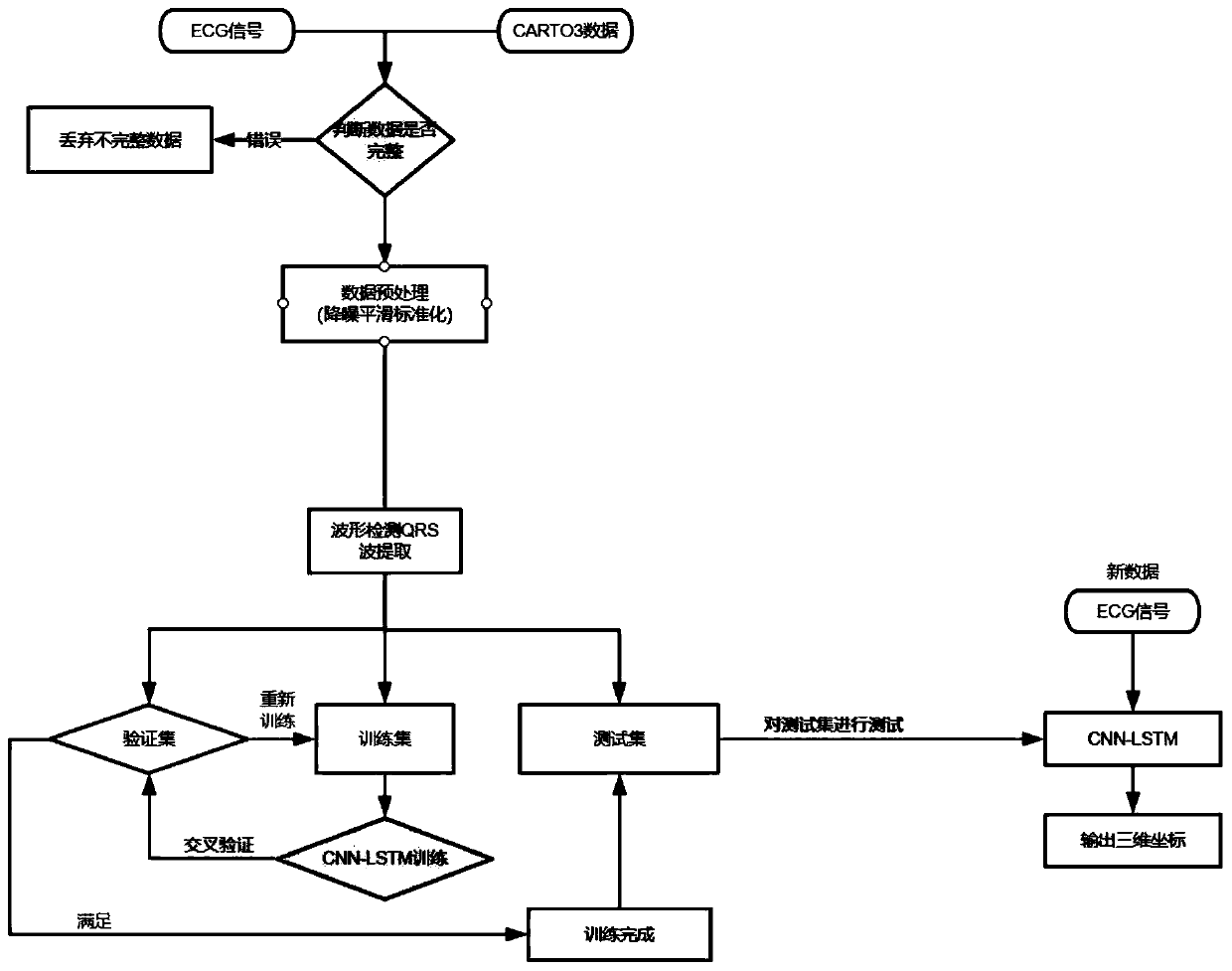Intracardiac abnormal excitation point positioning model construction method based on CNN and LSTM
A construction method and point positioning technology, applied in neural learning methods, character and pattern recognition, biological neural network models, etc., can solve problems such as low efficiency, time-consuming and laborious, and inability to provide the specific location of tachycardia, and achieve Solve time-consuming and labor-intensive effects
- Summary
- Abstract
- Description
- Claims
- Application Information
AI Technical Summary
Problems solved by technology
Method used
Image
Examples
Embodiment Construction
[0024] In order to describe the present invention more clearly, the technical solution of the present invention will be described in detail below in conjunction with the accompanying drawings and specific embodiments.
[0025] Such as figure 2 As shown, the present invention is based on CNN and LSTM intracardiac abnormal activation point localization model construction method, and specific implementation steps are as follows:
[0026] S1. Collect 12-lead body surface potential data of patients with ventricular tachycardia, and record the three-dimensional coordinates of the corresponding mapping points.
[0027] First, let the patient stick the commonly used medical 12-electrode body surface electrode patch to collect the patient's 12-lead body surface potential data; then, use the CARTO3 system to select the appropriate left ventricular endocardial position for three-dimensional electrodissection Mapping, and recording the 12-lead ECG signal of the corresponding position an...
PUM
 Login to View More
Login to View More Abstract
Description
Claims
Application Information
 Login to View More
Login to View More - R&D
- Intellectual Property
- Life Sciences
- Materials
- Tech Scout
- Unparalleled Data Quality
- Higher Quality Content
- 60% Fewer Hallucinations
Browse by: Latest US Patents, China's latest patents, Technical Efficacy Thesaurus, Application Domain, Technology Topic, Popular Technical Reports.
© 2025 PatSnap. All rights reserved.Legal|Privacy policy|Modern Slavery Act Transparency Statement|Sitemap|About US| Contact US: help@patsnap.com



